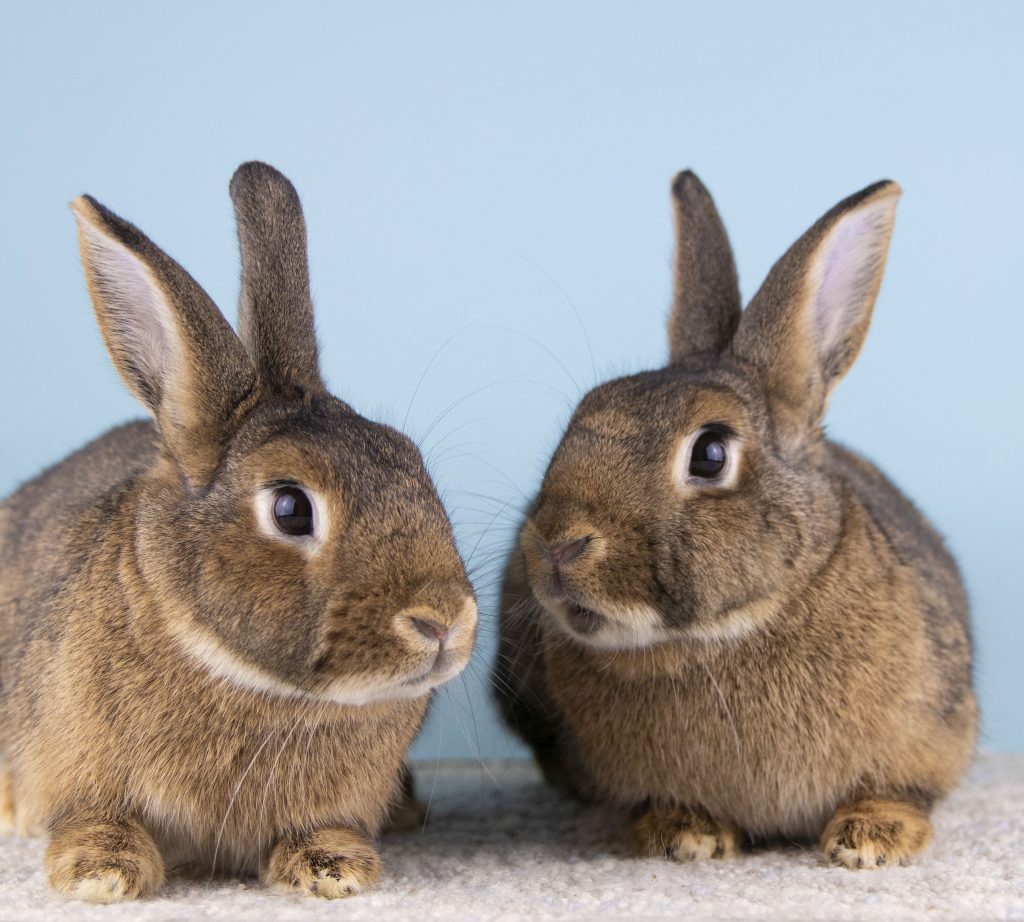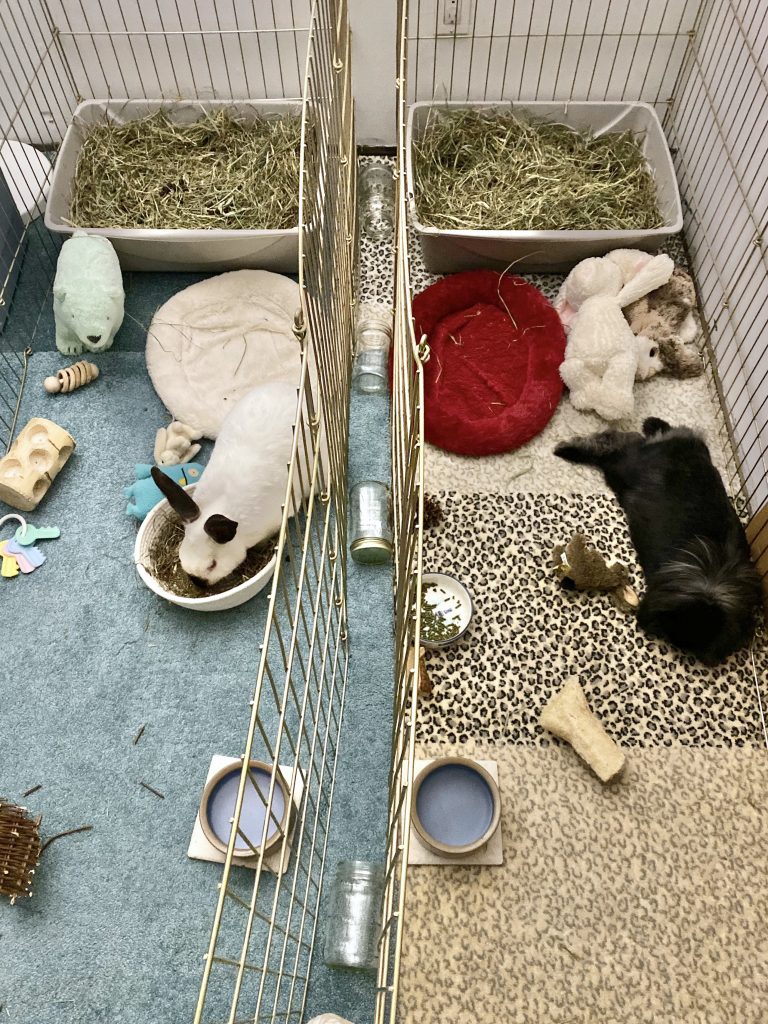Bonding: Finding a friend for your rabbit
Before attempting any introduction, the rabbits should be spayed or neutered
Rabbits are social creatures and there is nothing cuter than seeing a cuddling pair of rabbits grooming each other. They are clearly relaxed and happy and benefit from living in pairs or groups. Despite their love of companionship, you can’t just put two together and expect them to get along.
Choosing a mate
If you already have a rabbit, we can arrange for him to meet the rabbits we have available and see how they get along, and then guide you through the bonding process. If you already have a pair living separately, we can help you try to bond them also.
Rabbits rarely fall in love at first sight, but indifference is a good first sign of a potential pairing. A quick bonding can take two weeks while a more difficult bond can take months. It takes patience and commitment and it’s easy to get discouraged. You should wait at least a month after their spay or neuter before attempting a bonding session, as it gives them time to heal and for their hormones to subside.
Male/female bonds tend to work best, but same-sex bonding can work. Size, age, and breed are not important factors in choosing a mate, as all combinations can work. You are more likely to have a successful bond if both are adults.

The Process
Start by neutering your rabbits. Unneutered rabbits will most likely fight viciously. After they have healed and their hormones have died down, set them up in side-by-side cages. (See photo, right.) They should never be able to touch noses through the cages before they are safely bonded. Fights can break out, seemingly out of nowhere, and damage (both physical and emotional) can occur if they bite each other’s noses. The physical wounds could potentially abscess, and the grudges or resentments at being bitten could set your bonding efforts back.
When both buns have completely recovered from surgery, it is best to do bonding sessions in a neutral room with no furniture to hide (and fight) under. Rugs for traction and litterboxes for time-outs and pee breaks should be present.

Keep bunnies living caged, side-by-side with three inches of space between the cage bars—no touching, and don’t let one bun exercise in the same room where the other is confined to prevent resentment forming. Switch their soiled litterboxes if you like, to increase their getting used to each others’ scents.
Place the bunnies in the neutral room with you and observe. You, the caretaker, should wear sneakers on your hands to quickly plunge in-between a fight to stop it cold before it starts. Watch body language. Dominance, often displayed as mounting (humping) is perfectly normal, but is only okay IF the hump-ee doesn’t mind and if it’s not head humping (extremely dangerous for males if they get their penis bitten). If you see any signs of aggression—ears back at a 45-degree angle, tails raised, tension, circling, or chasing—separate the buns. Be careful to understand the difference between dominance and aggression. You can gently push the dominant bun to the side. The other rabbit may be submissive, but may also get irritated if mounted for too long. Both males and females will mount. Do this for one or two 2-minute sessions a day for at least a week.
Bonding takes commitment and patience on your part.
Work up to 5 minutes ONLY if all goes well for a week or more of 2-minute sessions. Have patience. The hardest thing about bonding is human patience (or lack thereof). Set a two-minute timer, if necessary, then put the bunnies back in their cages and get on with your life! The object is to build up many, many peaceful SHORT sessions rather than to push too fast for longer sessions. We often hear: “Well they did so well after 5 minutes that I extended it to 15 minutes. Then the fight broke out!”—a common mistake.
When your rabbits show positive signs of progress, you can gradually increase the time they spend together in the neutral area. After they can spend hours together, which can take weeks or months of gradually longer sessions, you should be looking for signs of affection, as in grooming and cuddling. With a tentative friendship, they should always be separated when you’re not around.
With your patience and cooperative, compatible bunnies, you can eventually enjoy the sight of your bunnies together, and they can enjoy each other’s company. Two rabbits really can be as easy as one. Boredom and depression are common symptoms of loneliness in rabbits, and boredom can sometimes lead to destructiveness.
